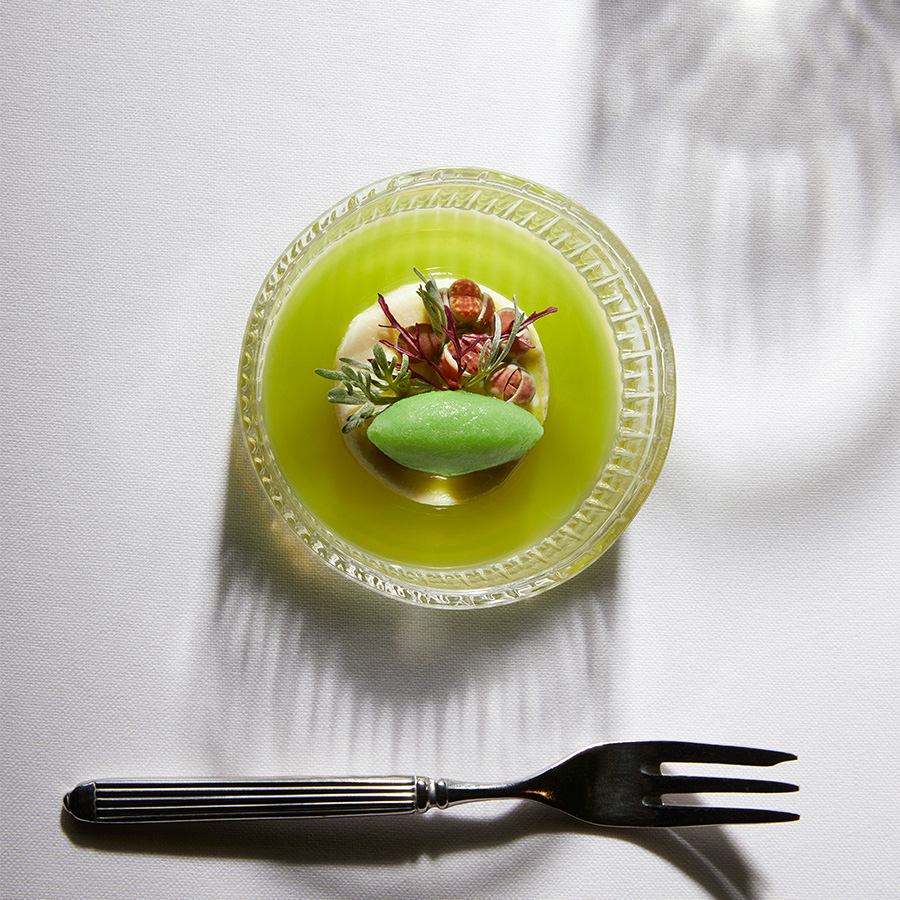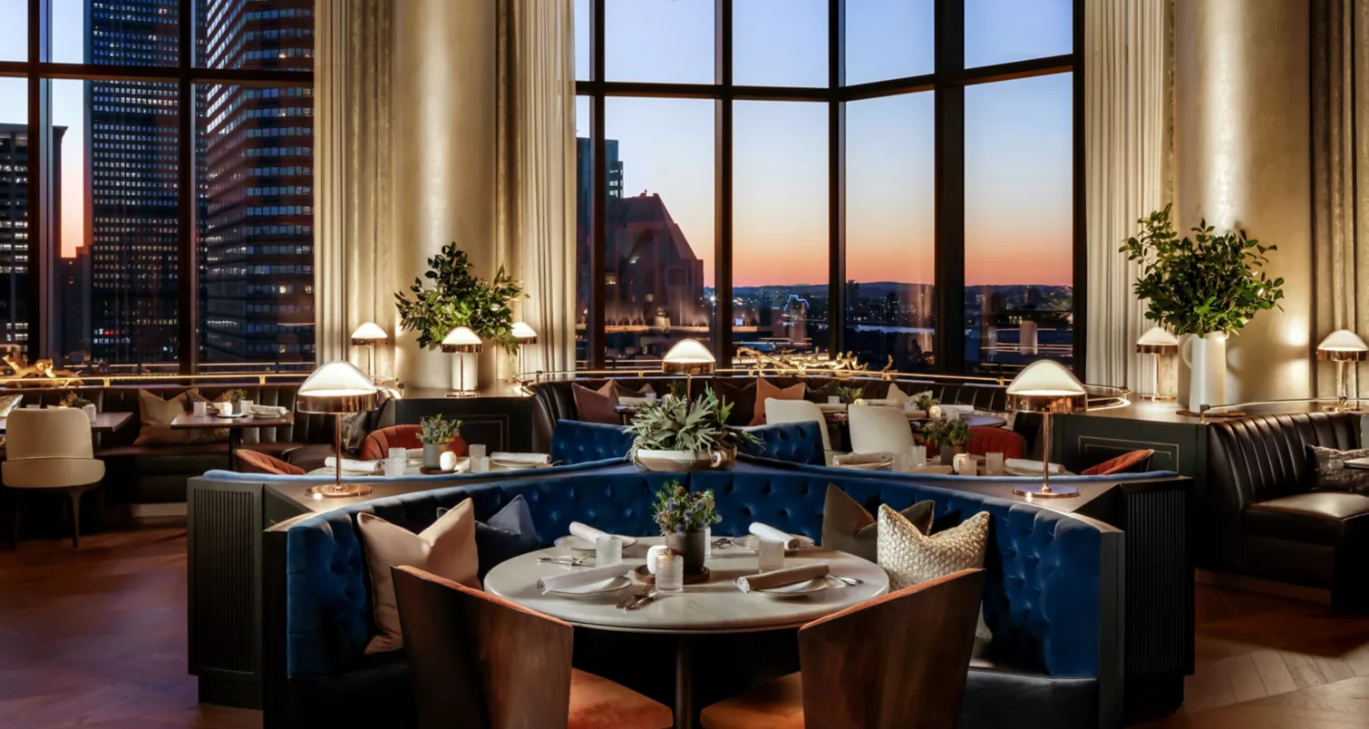A Guide To Firenze, Through The Gucci Lens
On the heels of Milan Fashion Week, Italy’s modern fashion capital gets all the sartorial fanfare. But there is a reason that travelers worldwide fall in love with bella Firenze. The Tuscan capital was where culture and the arts first flourished during the Medici Renaissance and remained a prominent fashion capital through the 1950s and 1960s.
Gucci’s Florentine roots go back to its origins. It is where the fashion house’s flagship boutique was opened in 1921, and is where the Archive is housed in the Palazzo Settimanni. But Gucci’s modern-day presence there asserts that Florence is more than a beautiful relic; it is more like a bridge that funnels creative genius between past and present. This is evident in a visit to the Gucci Palazzo within the Palazzo della Mercanzia, where visitors experience myriad sensorial art forms through the lens of the Gucci brand. Within its walls, there is an almost alchemical aesthetic that at times conjures up feelings of Gucci-meets-ketamine. Housed within an actual monument, the experience strikes a balance between the fashion house’s archival DNA and its forward-thinking cultural influence.
The synastry in this fashionable alliance is especially apt because Florentines consider themselves to be stewards of the art that surrounds them. It is a place where the historic and modern coexist side-by-side in balanced reverence, whether you are glimpsing the David or taking in a Banksy exhibit. Florence serves as a nest for creativity that makes it worthwhile for anyone visiting the city to consider what Gucci has to offer there.
Gucci Firenze Flagship
Of course, you will want to shop — and our historic tour of Gucci in Florence begins and ends with a shopping excursion.

Photo Credit: Courtesy of Gucci
Back in 1921, Gucci opened its flagship boutique on Via de Tornabuoni. Upon your arrival at the three-level boutique, you will be met by a personal shopper to guide you through its rooms and collections. A step inside takes you through Women’s RTW, after which you can take a momentary respite on butterfly-adorned chairs to take in the sights of their jewelry.
You can then move on to the oriental rug-adorned rooms of belts, sunglasses, and delicate silk scarves. Before long, the walls — displaying their prized collection of handbags — will inevitably steal your focus. To find the men’s collection, you make your way up the pink, upholstered stairway. Before your trip back downstairs, you can stop to peruse the shoes.
If you have plans later that day, they will happily wrap up your loot and deliver it to the hotel or destination of your choosing. I was heading to the Museum and restaurant next, but I wanted to carry my new Mini Diana Tote. So, they graciously wrapped up my YSL to pick up the next day.
Gucci Osteria da Massimo Bottura

Photo Credit: Courtesy of Gucci
Next, we stopped at the Michelin-Starred Gucci Osteria within the Palazzo della Mercanzia, which was built in the 1300s and restored in the 1900s. The art on the walls is none other than the historic facades of the very mercantile guilds that the space once contained, continuing the theme of stewardship that Gucci champions in Florence embody.
The most common question I was asked by friends was whether the restaurant was worth it. In a word, yes — it was the most unforgettable dining experience of the trip, as confirmed by my boyfriend, a local Florentine. The restaurant was a collaboration between Gucci CEO Marco Bizzarri and the esteemed Italian chef Massimo Bottura. Bottura is famous for his three-Michelin-star restaurant Osteria Francescana, and it shows.
Chef Karime Lopez’s menu includes a notable array of traditional dishes presented in contemporary ways, including an iteration of the famous Florentine steak. As you are seated amidst vibrant aquas and taffy pinks, surrounded by artistic textures, you can experience a corresponding array of fusions with nods to Mexican and even Japanese cuisine.

Photo Credit: Courtesy of Gucci
Miraculously, they could even accommodate my gluten-free and dairy-free diet. Meanwhile, my boyfriend did the bulk of the heavy culinary lifting by giving the menu a taste. While I enjoyed the Purple Corn Tostada, he savored Paolo Parisi’s Cinta Senese Smoked Shoulder. The Cinta Senese is a prized Tuscan pork from a specific breed of pig, whose leanest meat is aged beneath a rock for at least 16 months. His enjoyment of the Florentine steak rendition, Rosso’s Chianina (a prized cut of steak from an Italian breed of cattle) was also palpable. At one point he actually closed his eyes while taking a bite of this Tuscan specialty, which was served alongside black truffle, a Brunello sauce, and caviar.

Photo Credit: Courtesy of Gucci
We enjoyed our dessert — I tried the Promenade Into the Woods because I am partial to elderflower — with espressos, at which point I could not help but admire the Richard Ginori dishes. Something about the print, the designer Italian ceramic, and the quintessential Italian vision of petite espresso cups, inspired me to make a mental note to purchase a set as a souvenir.
Gucci Museo

Photo Credit: Courtesy of Gucci
If you make a reservation at the restaurant, you will actually receive free tickets to the museum next door, which opened in 2011 on the brand’s 90th anniversary. I suggest a guided tour of the space, which was curated by Maria Luisa Frisa. Every step of the way, historic items are presented alongside their contemporary counterparts, utilizing hi-tech, digital mediums to present and display the couture from old to new.
For instance, the tour began with a look at the history of the iconic bamboo handles — the very ones featured on my new Diana tote. The tradition began out of economic resourcefulness during the Cold War rationing of leather, when the brand began importing bamboo handles from Japan, creating an iconic couture symbol in the process.
Next, you enter into a presentation of Gucci’s luggage, another important milestone in the history of the fashion house. Guccio Gucci formerly worked at The Savoy in London and was so inspired by the status symbol inherent in luxury luggage that his first creations were actually in this vein.
A pink-filled room featuring some of the house’s most notable celebrity creations was particularly memorable to me. Florence Welch’s 2019 Met Gala gown was there, as well as Dakota Johnson’s bejeweled silver creation for the 2021 Venice Film Festival — one of my personal all-time favorites. The most obvious pièce de résistance is the infinity-like display of handbags, which shows how the brand has endlessly reinvented itself through collaborations, reinterpretations, and genuine evolution.
Gucci Palazzo Boutique & Bookstore
The last leg of the journey was one of the most anticipated — a curation of Gucci’s most whimsical, one-of-a-kind pieces and gifts. An array of garments, handbags, accessories, and goods that cannot be found anywhere else are contained within this gift shop. Upon entering, there is a distinct feeling of having gone through the rabbit hole. An onslaught of unique patterns, colors, and imagery awaits. This is where I was most struck by alchemical symbolism conjuring notions of awakening, transformation, and evolution.

Photo Credit: Courtesy of Gucci
Everything there is curated through a side of Gucci never before seen. You can just as easily purchase a cheeky coffee table book as you can a Gucci wallet with an all-seeing eye, a bejeweled crystal handbag, or slides with teal fur. You can even purchase a token to put into a gumball-like machine to buy a small, Gucci-branded ball. I opted for a tote bag emblazoned with a butterfly, a candle with black gothic writing topped by a snake, and, of course, the espresso cups I had so admired in the Osteria.
It might seem that nothing could be further from the brand’s history than this playground of color and imagination. It is more like a futuristic altar to the past. In Florence, you can experience modern Gucci in the very cradle from which it evolved, simultaneously glimpsing premonitions from a brand whose influence will help define the future.













